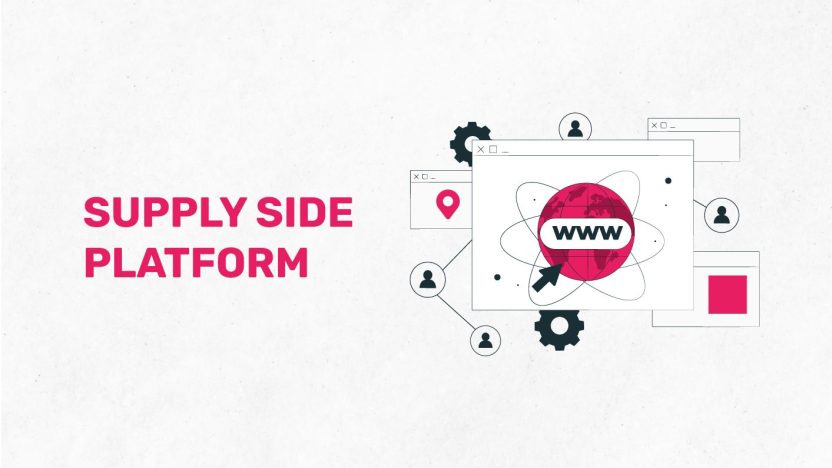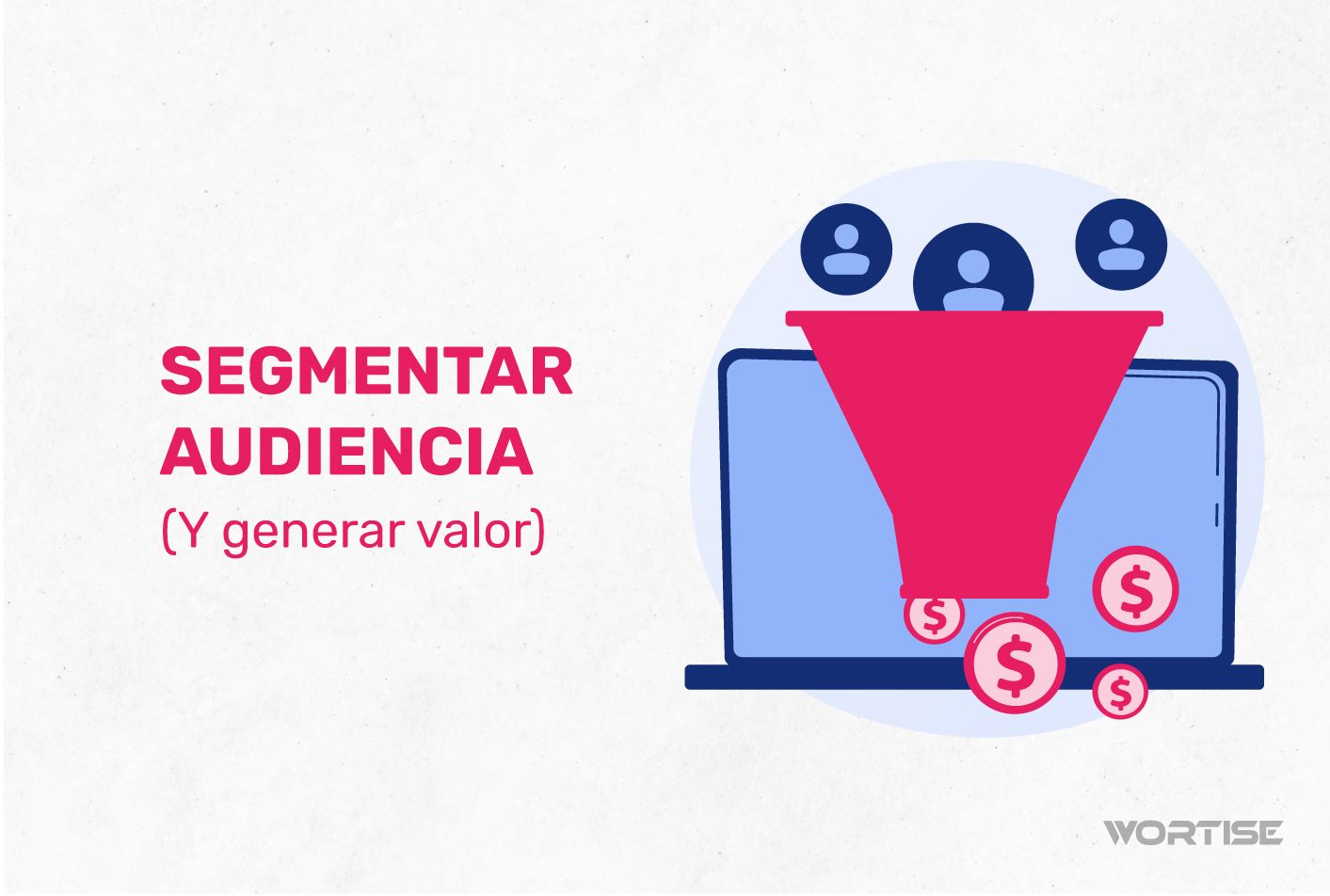Sacar el máximo provecho de tu aplicación como espacio publicitario no depende exclusivamente de ti. También necesitas herramientas adecuadas para administrar tu inventario, obtener el mejor coste efectivo por cada mil impresiones (eCPM) y llegar a advertisers premium. Por experiencia lo sabes: es indispensable usar un SSP o Supply Side Platform.
¿Cómo puede este tipo de mecanismos ayudarte a maximizar tu revenue? ¿Cómo te conectan con los anunciantes más indicados? ¿Cuáles son las ventajas para la colocación de anuncios? La experiencia de otros publishers y de plataformas de mediación te confirmará cuánto puede ayudarte esa herramienta. Veamos más a continuación.
¿Qué papel juega una SSP o supply side platform en la publicidad programática?
Una SSP o plataforma del lado de la oferta es una herramienta dirigida a coordinar, colocar y administrar tu inventario de anuncios. Es el principal punto de conexión de los publishers con el ecosistema de la publicidad programática, donde se negocian anuncios.
En ese entorno, un supply side platform te conecta con los Ad Exchange, plataformas de compra y venta de espacios donde también están los advertisers. En su caso, los anunciantes gestionan sus compras a través de los DSP o Demand-side platform.
Al ofertar tu inventario de anuncios con una SSP, será mucho más fácil ejecutar los mecanismos de oferta, como subastas abiertas u ofertas privadas; hacer seguimiento a las impresiones vendidas y ver su rendimiento final.
Automatización y orden, las principales bondades de un SSP
Hoy, ser publisher y no trabajar con plataformas del lado de la oferta es una locura. No cabría en la cabeza de un experto en programmatic advertising, pues ya están comprobados los múltiples beneficios de esta herramienta.
En primer lugar, automatiza la colocación de anuncios. Al estar continuamente conectado con varias fuentes de demanda, facilita la venta de tus impresiones sin necesidad de contar con agentes dedicados a esa tarea 24/7. Por supuesto, el seguimiento de los resultados facilita la obtención de métricas y el cálculo de indicadores clave de rendimiento o KPI.
Estas posibilidades están asociadas a otra gran ventaja: la transparencia del proceso. Dependiendo del mecanismo de oferta empleado, puedes saber cómo fue el comportamiento de las ad exchanges y el perfil de los advertisers que ofertan para usar tu inventario de anuncios.
Un SSP es sinónimos de ventajas para los publishers
Poder tener tus procesos bajo control es un imperativo hoy, especialmente si quieres monetizar adecuadamente. En esa tarea, un SSP o Supply Side Platform te ofrece múltiples ventajas operativas.
#1 Aprovecha los beneficios de una adecuada segmentación
Un SSP es una fuente inagotable de información que te ayudará a optimizar tu inventario de anuncios, según las características de tus usuarios. Esto te permitirá mostrar creatividades compatibles con el perfil de ellos y con las características de tu propia aplicación.
Así, atraerás a los advertisers más convenientes para ti, obtendrás un mejor eCPM y garantizarás un óptimo retorno de la inversión publicitaria (ROAS).
#2 Mejora el Fill Rate Ads
Cuando usas una plataforma del lado de la oferta, conectas eficazmente con aquellos anunciantes que te garantizan anuncios afines a tu comunidad de usuarios. Por ende, registras una mejor tasa de relleno, es decir, un mayor porcentaje de anuncios se muestra efectivamente a los usuarios de tu aplicación.
Mientras más impresiones efectivas consigas, mayores ganancias y mayor reputación tendrás entre los anunciantes.
#3 Reduce la fatiga de impresiones
¿Alguna vez has visto una creatividad con mucha frecuencia? La primera vez, puedes prestar atención. En las siguientes ocasiones, casi por instinto, harás clic en el botón “Saltar anuncio”. Esa situación tan desesperante se conoce como riesgo de fatiga por impresiones publicitarias.
Como publisher, sabes lo peligroso de ese tipo de situaciones: el Fill Rate Ads y el ROAS van en caída libre. Eso no te conviene a ti y menos aún a los advertisers, que corren el peligro de perder su inversión.
Para evitar ese problema, los SSP establecen con las DSP un límite de frecuencia de anuncios. Así, es posible controlar el número de veces que se muestran a un usuario y aumentar las posibilidades de registrar impresiones efectivas.
#4 Facilita la fijación de un precio mínimo a tu inventario
No recibir las ganancias que esperas es frustrante. Si optimizas tu aplicación y tu inventario de anuncios, esperas obtener una recompensa proporcional a tu esfuerzo. Con un SSP, tendrás el control del valor de tus impresiones.
¿Cómo es posible? Te permiten fijar un precio mínimo a tu inventario de anuncios. Puedes ajustarlo según la temporada del año, el comportamiento de los advertisers y de los usuarios, para mantener un margen razonable frente a tus competidores.
#5 El publisher mantiene el control del inventario de anuncios
Puedes tener una experiencia total administrando directamente las impresiones a ofertar. En Wortise, por ejemplo, manejamos directamente nuestro inventario de anuncios a través del SSP de Google Ad Manager. De esta forma, gestionamos las fuentes de demanda desde un mismo lugar, desarrollamos campañas de reserva directa o programática y controlamos otras variables clave para colocar anuncios.
Como ves, con un supply side platform puedes mantener el control de tu inventario sin sacrificar tu libertad como editor. Simplemente, amplias tus posibilidades de obtener mayores ganancias.
¿Un publisher puede colocar sus anuncios sin un SSP?
La evolución de la publicidad programática indica una cosa: si quieres garantizar una base estable para tu inventario de anuncios, usa un SSP. Automatizarás muchos procesos: la medición de resultados, la relación con varias fuentes de demanda y la mejora de la experiencia de los clientes.
Incluso, si quisieras ofrecer una porción de tu inventario a un advertisers por acuerdos preferentes, un supply side platform sigue siendo una verdadera alternativa para hacer seguimiento a esas impresiones.
Un viaje al pasado te sacará de dudas
Si tienes experiencia en el mundo de la publicidad, sabrás cuántos dolores de cabeza ahorra un SSP. Antes, la venta de espacios publicitarios –salvo el caso de plataformas reconocidas– iba en una sola dirección: editores buscando a anunciantes. Esta tarea implica ejecutar diversas tácticas para alcanzar los ingresos estimados.
Con el crecimiento del mundo digital, este proceso se automatizó para garantizar condiciones más equitativas y, al mismo tiempo, permitir un seguimiento en tiempo real de los resultados obtenidos. El margen de maniobra para corregir cualquier falla es mucho mayor.
Un SSP te ayuda a consolidarte como publisher
Si quieres monetizar a través de tu app, debes insertarte en el mundo de la publicidad programática a través de los SSP. La primera razón resulta obvia: te conecta en condiciones más equitativas con otros advertisers, aprovechando las ventajas de una segmentación mucho más precisa.
Además, mantienes un co
ntrol en tiempo real de tu inventario de anuncios, una impresionante diferencia con el pasado. Esa es la ventaja de plataformas como Ad Google Ad Manager, PubMatic o Magnite, tres de las más reconocidas en el mundo de los SSP.
¿Cómo usar un SSP para maximizar tus ganancias?
Gracias a sus múltiples beneficios, un SSP o Supply Side Platform es un aliado vital para aumentar tus ganancias como publisher. Pero, ¿cómo puedes hacerlo? ¿Qué necesitas para aumentar tus ganancias con esta herramienta? Aquí tienes las claves:
#1 Define tus objetivos de monetización
No importa si tienes el mejor SSP: si no tienes metas claras, estás muy lejos de maximizar tus ingresos por monetización. Establece un plan para incrementar tus ganancias mediante la colocación de anuncios, ajustado a la realidad de tu aplicación y las posibilidades de crecimiento del sector al que perteneces.
Con esos criterios, podrás escoger el SSP que mejor se ajuste a tus objetivos y te brinde las condiciones para evaluar la colocación de tu inventario.
#2 Estudia las fuentes de demanda que usan los SSP
Al momento de escoger un supply side platform, evalúa con cuáles fuentes de demanda se conecta. Así, podrás determinar las posibilidades reales que tienes de aumentar tus ingresos por monetización y cuál plataforma funciona mejor para las características de tu aplicación.
Aunque no hay un número estándar de fuentes de demanda, es fundamental evaluar con cuántas te conecta realmente. Mientras más fuentes, más posibilidades de llegar a varios advertisers relevantes y colocar tus anuncios.
Otro aspecto clave son los perfiles de los anunciantes, a cuál público desean llegar y dónde quieren hacer publicidad. Estos indicadores también te ayudarán a elegir efectivamente.
#3 Evalúa la experiencia de uso de la plataforma
Considera aspectos como la comodidad que te ofrece una SSP para su uso, la posibilidad de establecer acuerdos privados y las opciones de conexión para ofertar tu inventario bajo distintas modalidades.
Otro aspecto clave es la generación de métricas y KPI. ¿Qué informes te ofrece? ¿Son realmente legibles para ti? ¿Pueden arrojarte informes avanzados sobre el desempeño de tu inventario de anuncios? Este aspecto es vital para corregir cualquier situación que atente contra tus ganancias.
#4 Estudia cómo se automatiza la venta de anuncios
Para aprovechar al máximo un SSP, no es suficiente que automatice la venta de tu inventario: debemos ver cómo nos favorece ese proceso. Si reduce las operaciones manuales al mínimo y te garantiza el mayor margen de ganancias posible, funciona para ti.
También, analiza las herramientas que emplea para optimizar la venta de anuncios. En este punto, el empleo de algoritmos es un instrumento fundamental para escoger el mejor precio para cada impresión de anuncio.
#5 Verifica la confiabilidad de los análisis en tiempo real
Si algo nos permite un SSP es llevar el pulso del proceso de colocación de nuestro inventario. En ese sentido, la calidad de los informes arrojados por la plataforma juega un papel clave. Mientras más precisos y útiles, mayores posibilidades tendrás de ajustar tus estrategias.
En ese sentido, evalúa si los informes te brindan la información que necesitas para evaluar el cumplimiento de tus objetivos, así como la nomenclatura usada. Algunas plataformas usan otros criterios para procesar y analizar la información distintos a los más frecuentes. Eso puede ser un problema si empleas varios SSP.
#6 Aprovecha las posibilidades de optimizar tu inventario de anuncios
Con un SSP tienes mayores posibilidades de controlar efectivamente tu inventario de anuncios. Puedes definir los precios mínimos más convenientes para tu aplicación, los formatos que te reportan mejores ganancias y las ubicaciones más favorables para obtener impresiones efectivas.
Al mismo tiempo, mantienes el control de las creatividades que se publican en tu app. En algunos casos, pueden ser anuncios que afecten a la experiencia del usuario o sean poco seguros para tu marca. Por fortuna, puedes controlar su aparición para preservar tu reputación.
Además, puedes administrar de una forma muy sencilla tu inventario desde una misma plataforma para mejorar tu desempeño en distintas fuentes de demanda.
Un SSP o Supply Side Platform debe ser fácil de usar
Al momento de escoger una plataforma del lado de la oferta, comprueba las facilidades de integración con tu aplicación, la configuración de tu inventario y las posibilidades de mejorar la colocación de tus impresiones. Mientras más sencillo, mejor para tus propósitos.
#7 Comprueba la efectividad del SSP
Si ya estás trabajando con un SSP o Supply Side Platform, seguramente ya tienes pruebas de su efectividad. ¿Quieres saber si te funciona? Entonces, revisa si mejoró el Fill Rate Ads y el eCPM. Además, el Coste por Mil Impresiones (CPM) que ofrecen los advertisers debe ser mayor al reportado antes de la integración de la plataforma.
Pero, más allá de estas métricas, el principal indicador de su efectividad es la maximización de tus ganancias. Si efectivamente está ocurriendo, entonces el SSP es conveniente.
Elige los mejores SSP para maximizar tus ganancias. En Wortise te conectamos con las mejores redes de anuncios
¡Hola, Publisher! Triunfar en la publicidad programática exige contar con las mejores herramientas. Para sacar el mayor provecho a tu inventario de anuncios, no solo necesitas un SSP. Necesitas un equipo de expertos para diseñar las mejores estrategias de monetización.
En Wortise te ayudamos a incrementar tus ingresos como editor con nuestra plataforma de redes de anuncios avanzada con más de 100 Ad Networks.
Brindamos soporte personalizado, el eCPM más alto del mercado y acompañamiento con tácticas para maximizar tus ganancias.




